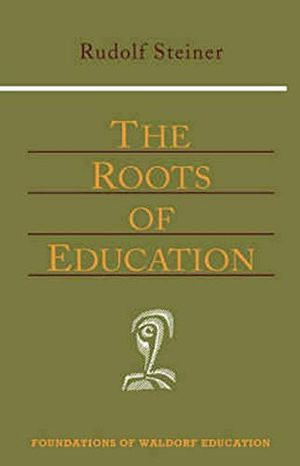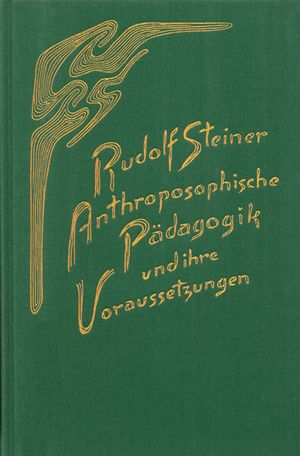GA 309


Anthroposophical Pedagogy and its Prerequisites
Anthroposophische Pädagogik und ihre Voraussetzungen
Five public lectures, three answers to questions and an address before a demonstration of pedagogical eurythmy, Berne 13 to 17 April 1924.
These lectures on Waldorf education were given as a course during Easter week, 1924, in Bern. Although these talks were given more than eighty years ago, they remain remarkably contemporary. Every word still resonates with passion and dedication to the human adventure.
„We must develop an art of education that can lead us out of the social chaos into which we have fallen during the last few years and decades.... There is no escaping this chaos unless we can find a way to bring spirituality into human souls through education, so that human beings may find a way to progress and to further the evolution of civilization out of the spirit itself.“
At the time of these lectures, Steiner had only eleven months left to live in this world. The first Waldorf school had been established five years earlier, and the intervening period witnessed Steiner's tireless activity in every area of that school's life. Now it was, in a sense, time to bring the ripe fruit of this work to the public.
Together with its companion course The Essentials of Education (CW 308), presented three days earlier, this book provides a stimulating synthesis of the Waldorf approach to education. Teachers, parents, and anyone interested in education will discover the fundamental characteristics of a new art of education.
Contents (selection)
Lecture 1: A new education requires a new knowledge of the whole human being in body, soul, and spirit. The change of teeth signals the end of the first stage of childhood. Soul and spirit descend into a body provided by inheritance, which is used as the model for the "second" human being. During the first stage the child is a sense organ that perceives moral influences. The influence of the teacher's temperament.
Lecture 2: The goal of Waldorf education is to reveal new methods of teaching. The power of spiritual perception for understanding children and adults. Sleeping and waking. The seasons reflected in the human being. Thinking as an etheric "grasping." Materialistic ideas and insomnia. Psychic influences and physical effects.
Lecture 3: Memory before and after the change of teeth. The physical and etheric bodies. The etheric body and sculpting. The astral body and music. The I-being and speech. The musical scale and the human body. The teacher as therapist. Doctors and the school. Teaching letters.
Lecture 4: The sense organization and moral development at the change of teeth. Mathematics begins with the whole. The child's natural religious impulse. The need for images after seven. The need to feel a connection with destiny after fourteen. The child's relationship with the world.
Lecture 5: The three divisions of the middle stage of childhood. Nature and history. Children after puberty go into life. The experience of immortality. Punishment. Reading the child. The need for a living experience of one another today. Moon and Sun forces in the plant world. Spiritual science reveals the unity of the human being with the world.
Literature
- Rudolf Steiner, Torin M. Finser (Introduction): The Roots of Education. CW 309. 3rd edition. SteinerBooks 1998. ISBN 978-0880104159; eBook ASIN B005IHDMB4 rsarchive.org
German
- Rudolf Steiner: Anthroposophische Pädagogik und ihre Voraussetzungen, GA 309 (1981), ISBN 3-7274-3090-7 English: rsarchive.org German: pdf pdf(2) html mobi epub archive.org
 |
References to the work of Rudolf Steiner follow Rudolf Steiner's Collected Works (CW or GA), Rudolf Steiner Verlag, Dornach/Switzerland, unless otherwise stated.
Email: verlag@steinerverlag.com URL: www.steinerverlag.com. Index to the Complete Works of Rudolf Steiner - Aelzina Books A complete list by Volume Number and a full list of known English translations you may also find at Rudolf Steiner's Collected Works Rudolf Steiner Archive - The largest online collection of Rudolf Steiner's books, lectures and articles in English. Rudolf Steiner Audio - Recorded and Read by Dale Brunsvold steinerbooks.org - Anthroposophic Press Inc. (USA) Rudolf Steiner Handbook - Christian Karl's proven standard work for orientation in Rudolf Steiner's Collected Works for free download as PDF. |
